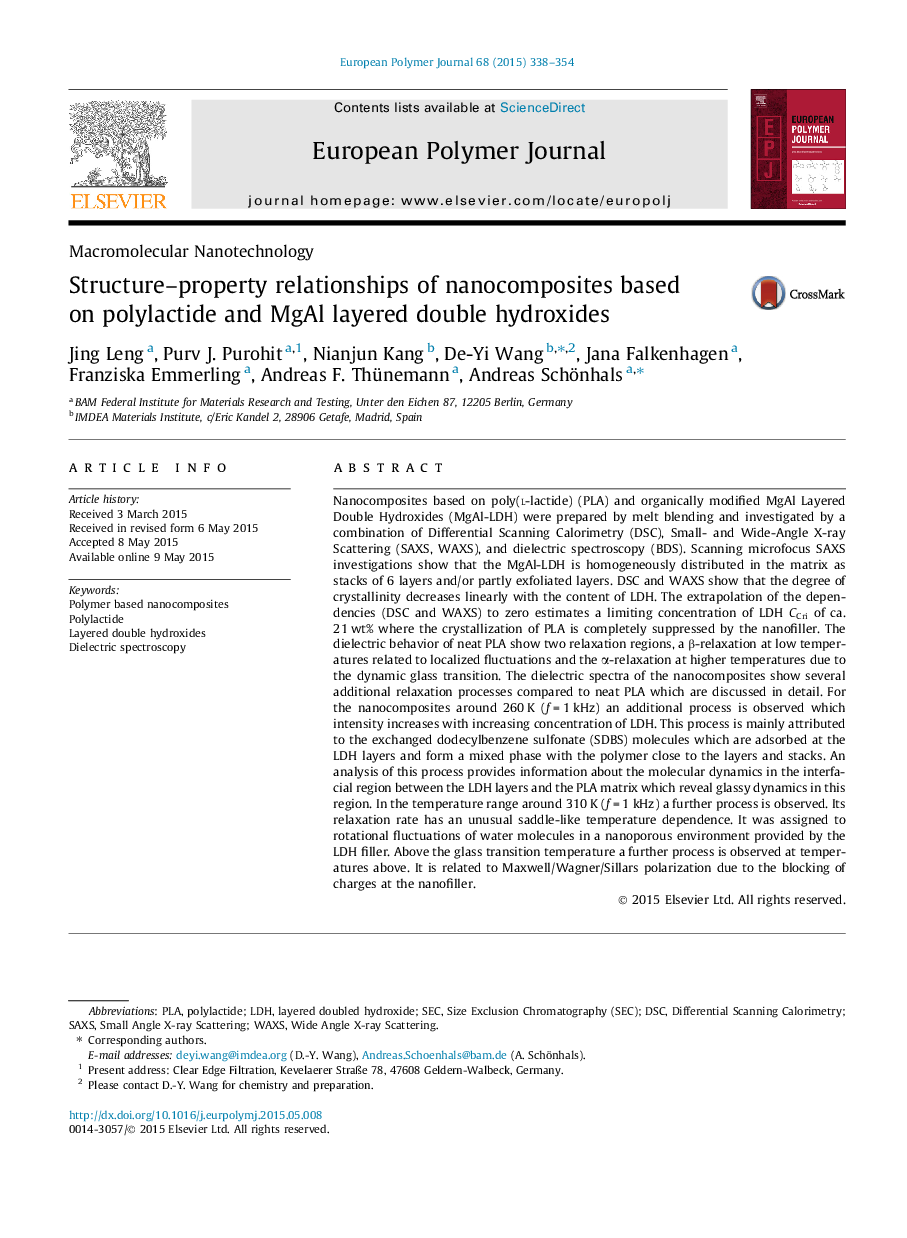| Article ID | Journal | Published Year | Pages | File Type |
|---|---|---|---|---|
| 1395129 | European Polymer Journal | 2015 | 17 Pages |
•Nanocomposites are investigated by an orthogonal combination of methods.•Space resolved SAXS investigations show that the Filler is homogeneously distributed.•A concentration of the filler is estimated, where crystallization is suppressed.•The dielectric spectra of the nanocomposites are discussed in detail.
Nanocomposites based on poly(l-lactide) (PLA) and organically modified MgAl Layered Double Hydroxides (MgAl-LDH) were prepared by melt blending and investigated by a combination of Differential Scanning Calorimetry (DSC), Small- and Wide-Angle X-ray Scattering (SAXS, WAXS), and dielectric spectroscopy (BDS). Scanning microfocus SAXS investigations show that the MgAl-LDH is homogeneously distributed in the matrix as stacks of 6 layers and/or partly exfoliated layers. DSC and WAXS show that the degree of crystallinity decreases linearly with the content of LDH. The extrapolation of the dependencies (DSC and WAXS) to zero estimates a limiting concentration of LDH CCri of ca. 21 wt% where the crystallization of PLA is completely suppressed by the nanofiller. The dielectric behavior of neat PLA show two relaxation regions, a β-relaxation at low temperatures related to localized fluctuations and the α-relaxation at higher temperatures due to the dynamic glass transition. The dielectric spectra of the nanocomposites show several additional relaxation processes compared to neat PLA which are discussed in detail. For the nanocomposites around 260 K (f = 1 kHz) an additional process is observed which intensity increases with increasing concentration of LDH. This process is mainly attributed to the exchanged dodecylbenzene sulfonate (SDBS) molecules which are adsorbed at the LDH layers and form a mixed phase with the polymer close to the layers and stacks. An analysis of this process provides information about the molecular dynamics in the interfacial region between the LDH layers and the PLA matrix which reveal glassy dynamics in this region. In the temperature range around 310 K (f = 1 kHz) a further process is observed. Its relaxation rate has an unusual saddle-like temperature dependence. It was assigned to rotational fluctuations of water molecules in a nanoporous environment provided by the LDH filler. Above the glass transition temperature a further process is observed at temperatures above. It is related to Maxwell/Wagner/Sillars polarization due to the blocking of charges at the nanofiller.
Graphical abstractFigure optionsDownload full-size imageDownload as PowerPoint slide
